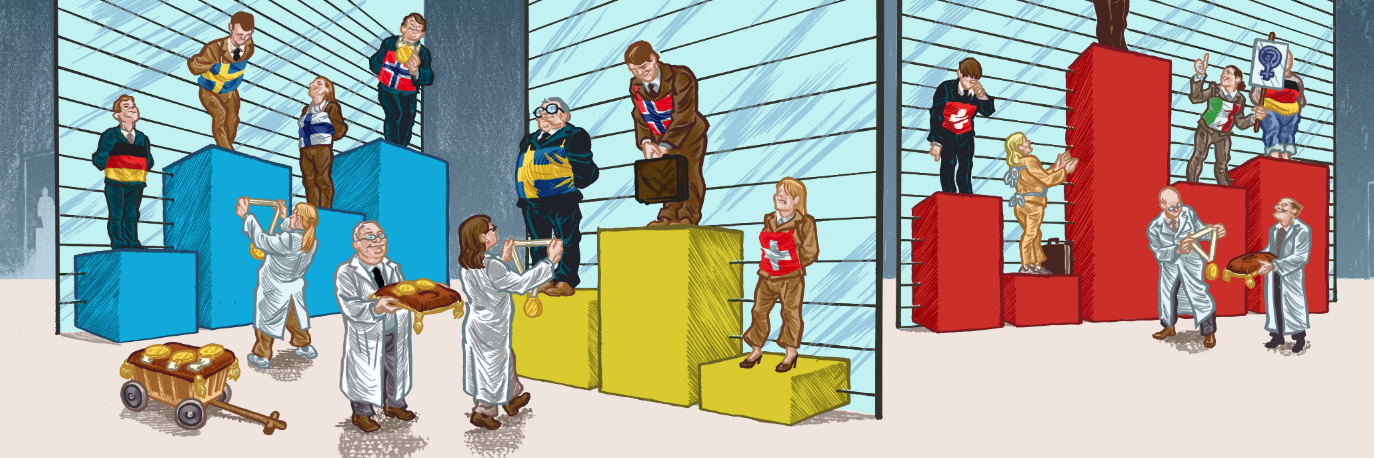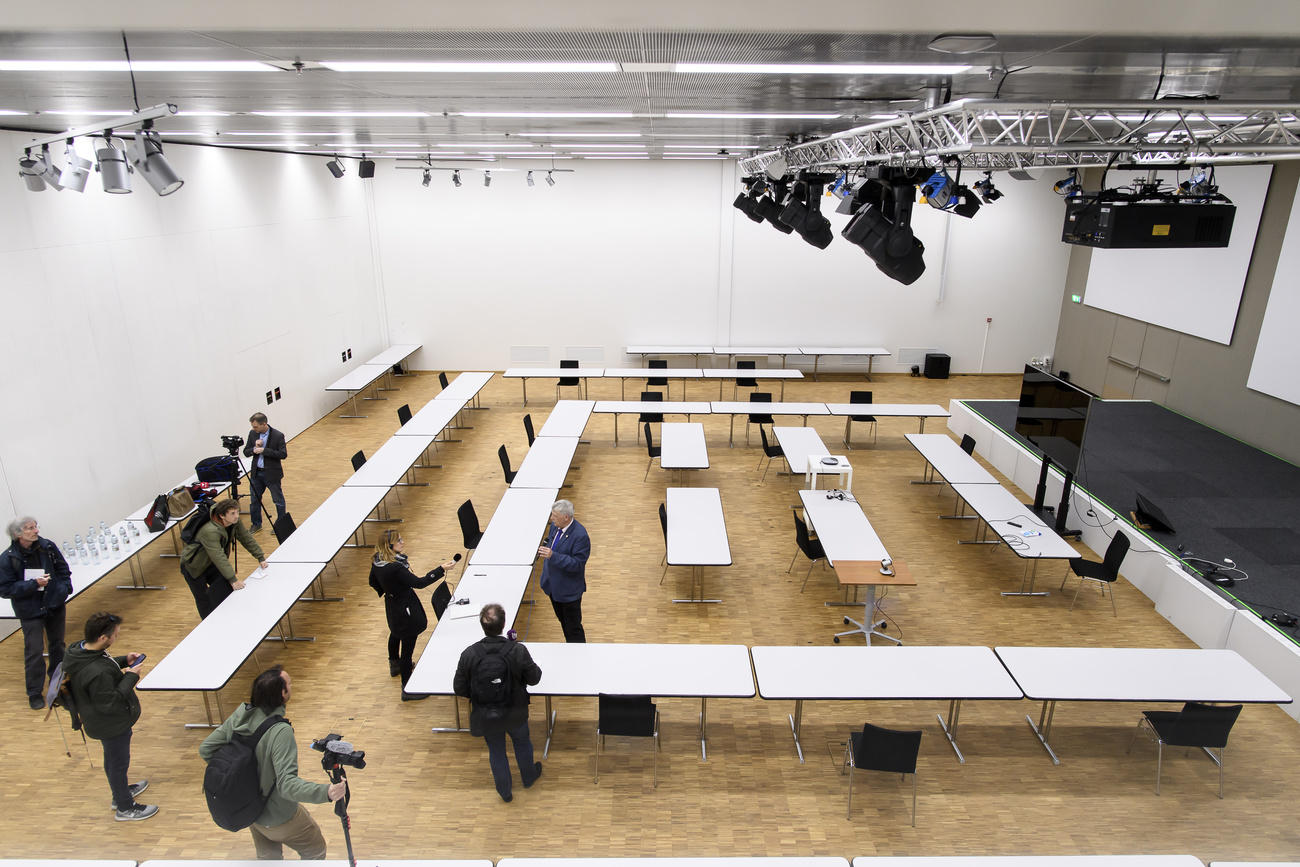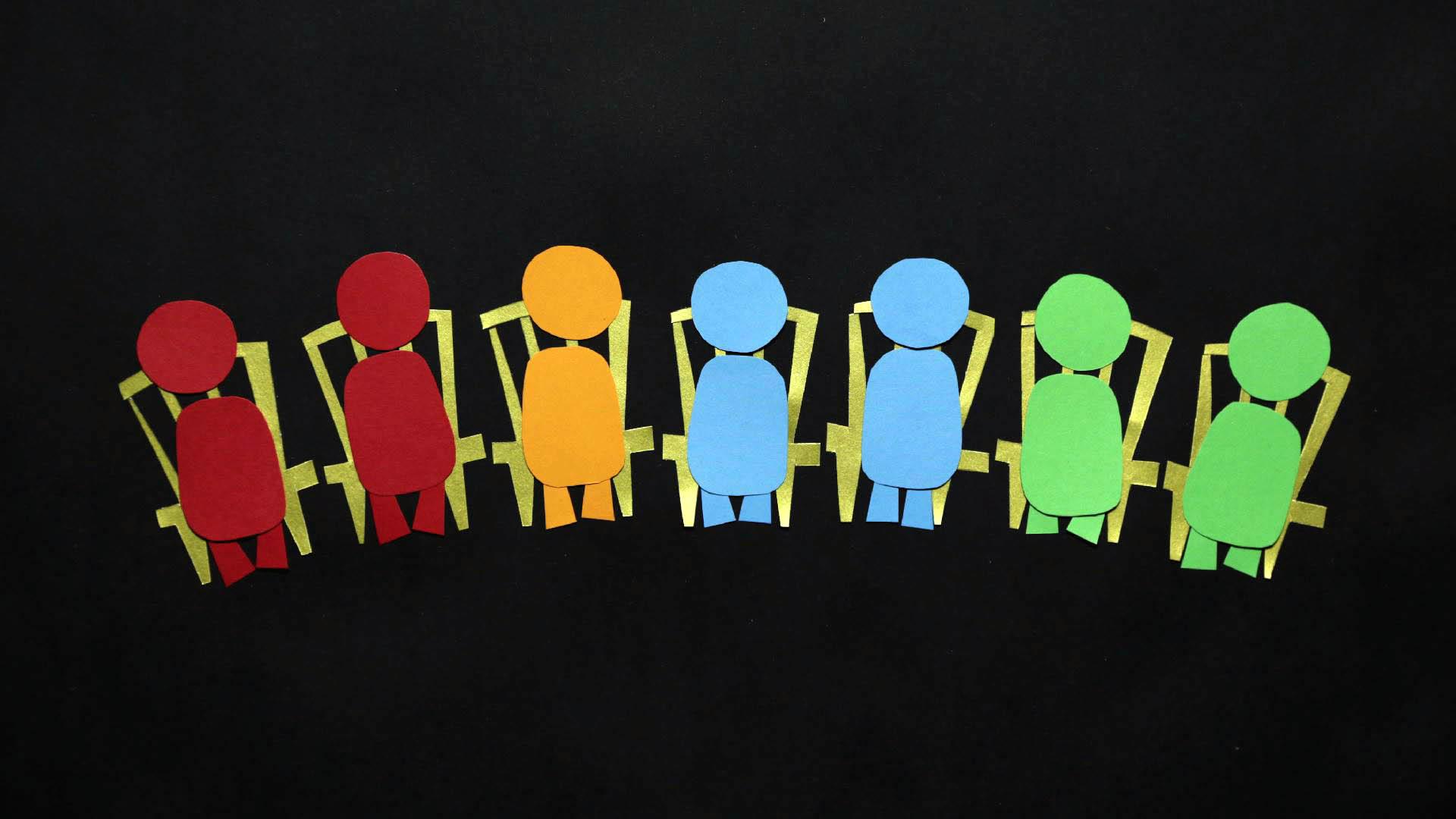How to make the Federal Council more weatherproof

The seven-person Federal Council (Swiss government) is a truly Swiss invention, but it has been scarcely researched in the field of political science. A book by political scientist Adrian Vatter makes up for that – and points out where there is room for improvement.
Classic teaching on systems of government takes a straightforward approach.
There are parliamentary systems where the people elect the parliament, like in the United Kingdom. The parliamentary majority determines the government, and it can also topple it, just as the government can also dissolve parliament.
Then there are presidential systems, like in the United States. Parliament and the government are elected in separate votes, so each has its own authority with mutual checks and balances.
On December 9, parliament elected Guy Parmelin as Swiss president for 2021.
The 61-year-old French-speaking economics minister from canton Vaud will take over from Simonetta Sommaruga to hold the largely ceremonial post.
But these categories don’t encompass the full range of systems of government that exist today – among them, the Swiss system. Here, the government is elected by parliament, but for a fixed term of four years. The same as the term for parliamentarians. There is no mechanism for the dismissal of either authority by the other.
The fathers of the Swiss constitution of 1848 were unable to push through popular elections to choose the government. Nor did any of the three attempts to entrust the people with the election of the Federal Council muster a national majority. So a genuine Swiss invention dating from 1848 remains essentially unchanged to this day.
Adrian VatterExternal link, who has just presented the first comprehensive work by a political scientist on the federal government, calls it a “hybrid system of government” in his latest book Der Bundesrat. Eine Schweizer RegierungExternal link (The Federal Council. A Swiss Government).

The government is based on the principle of a cooperative executive that is elected by parliament. In its work, however, the government is largely autonomous. Both authorities are kept in check by referendums, so directly by the people, who can correct their course when necessary.
The government’s three dilemmas
This system of government was established in the 19th century. The French founded the first collective government in the Helvetic Republic era – first with five, then with seven so-called directors. The founders of the Swiss federal state adopted this model when they created the Federal Council.
They went back and forth over the number of members, but finally settled on seven. Three were reserved for the former urban areas of Zurich, Bern and Vaud. The other cantons together had a majority with a total of four seats, but they had no individual rights to permanent representation. The only sacred rule observed through the ages was a fair distribution by language area. Informal rules on the make-up of the government, such as origin by language area and party, exist to this day.
The government was structured according to two principles from the beginning. The members of the national government are part of a cooperative, but also head a department, a branch of the administration. In the cooperative they decide together; in the department, they make their own decisions. The more a member of the government focuses on the second, the sooner he or she loses the overview, Vatter says.
The political analyst describes this as the first dilemma facing our government.
But the author also identifies two more dilemmas:
No. 2:Each member of the government is simultaneously part of a government and part of his or her party. This was not envisaged in the 19th century, because at that time no national parties existed yet. So the modern Radical-Liberal Party, Christian Democratic Party, Swiss People’s Party and the Conservative Democratic Party had “representatives” in the national government before they officially existed on a national level. It was only the other way round for the Social Democrats, who were in opposition for a long time to start with.
And finally the third dilemma: The government’s integration into the network of associations, interest groups and lobbyists. According to Vatter, these connections have become much more intensive over the past 30 years. Growing expectations among special interest groups, however, make it more difficult to pursue higher aims, the author says.

More
‘A leaf out of Switzerland’s book’ on how to elect a president
Vatter sees all three dilemmas as structural problems for the Swiss government. Nominated by parties, elected by parliament, influenced by pressure groups, and held in check by voters: this is one possible way to sum up the Swiss system of government.
Reform proposals
Vatter’s study is interesting, because alongside the history and functioning of government, it also lists proposals for reform.
His starting point is the array of ideas that have emerged since the crisis-ridden 1970s. The only one of these to be implemented was the small “Reform of State Leadership” at the beginning of the 21st century. This imposed a maximum of ten state secretariats and strengthened the general secretaries of departments. It means that each member of the government can create his own small cabinet with connections to parties, associations and the media.
Vatter is sure that this reform doesn’t go far enough in view of broad trends such as internationalisation, Europeanisation and the increasing importance of the media and personal profiles, but also on account of a new polarisation of the party landscape and business and society.
He observes that the government muddles through very effectively in good times, but is lacking in ideas for tough times. European policy since 1992 illustrates this perfectly, but so does the coronavirus crisis in 2020.
The author therefore suggests three further measures to reform the government. None of them are new in themselves. But the combination is the result of the most comprehensive evaluation so far.
These reforms are:
- A concordance treaty to promote coherent government activity and set priorities. This should help to better integrate the governing parties.
- A strengthened presidential department based on the model of cantons such as Vaud and Basel-City to increase coordination of planning and leadership of the government. This would mean raising the status of the current Federal Chancellery.
- A Federal Council election with several lists which fulfil language and party-political requirements but comprise different individuals. Instead of resorting to back-room deals, parliament should then be in a position to determine the political course.
With these, the Bern professor has suggested three significant improvements to the status quo.
The concordance contract should improve political strategy in relation to content.
The presidential department should strengthen leadership.
Selection by list should guarantee a homogenous composition of government members.
This would change the Swiss system of government, Vatter says. It would bring it close to the parliamentary system, without going that far. It would stay on its current course, because government policy would still be determined by referendums.
But the structure of the government, the author hopes, would be more streamlined. And that is the obvious weakness of the status quo in Switzerland: the system resists resolute, cohesive governance.
Der Bundesrat. Eine Schweizer Regierung (The Federal Council. A Swiss Government) by Adrian Vatter, published by NZZ Libro, 400 pages

More
Fifty shades of democracy: can you measure people power?
The political scientist Adrian Vatter is troubled by the deadlock that arose from the government election in 2019. He proposes that the parties’ performance in parliamentary elections should determine the composition of the government. Big changes in one area would have consequences in others. Parliament would only determine the members of the government in a selection from a range of lists, instead of individually.
In 2019, this would have led to a government with two seats for the Swiss People’s Party and one seat each for the Social Democratic Party, the Radical-Liberal Party, the Green Party, the Christian Democratic Party and the Liberal Green Party.
Translated from German by Catherine Hickley

In compliance with the JTI standards
More: SWI swissinfo.ch certified by the Journalism Trust Initiative














Join the conversation!